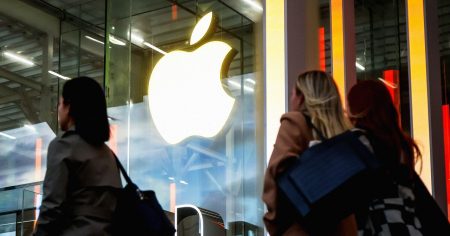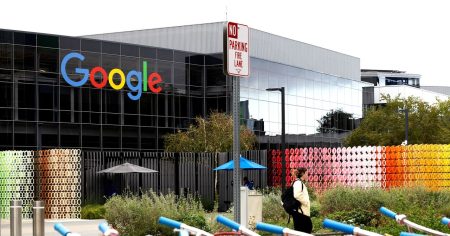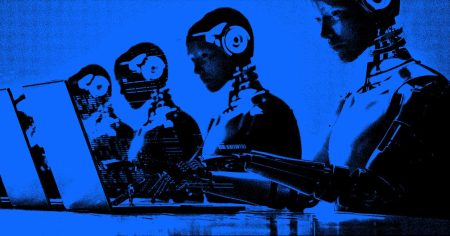Christopher Kelly is the president and co-founder of droppGroup — the Web3 Technology solutions leader.
As someone who has been investing in the technology space for nearly a decade through my involvement with some of the earliest blockchain projects, and in my current role as the president and co-founder of an artificial intelligence and machine learning tech company, I am intrigued as to the way new technologies are viewed by the wider technology community.
Today, the term Web3 has garnered considerable attention, often synonymous with blockchain technology and its various elements. However, I contend that the current definition of Web3 falls short of its true potential. In my opinion, saying Web3 is only blockchain technology is like saying Web 1.0 was only static HTML pages.
In the early internet, Web 1.0 was primarily characterized by static HTML pages that displayed text and basic images. It lacked interactivity and dynamic content, restricting the possibilities of online experiences. However, as the internet evolved, Web 1.0 paved the way for more advanced technologies and interactivity, such as the integration of JavaScript and server-side scripting, leading to the emergence of dynamic webpages and interactive web applications—cue the Web 1.0 revolution.
Likewise, Web3 is not limited to blockchain alone; rather, it represents a convergence of transformative technologies: blockchain, artificial intelligence (AI), machine learning (ML) and extended reality (XR). Together, these pillars create a powerful force that could revolutionize industries and drive the next leap in human evolution.
Rethinking Web3: The Synergy Of Transformative Technologies
The true essence of Web3 lies in its amalgamation of AI, ML and XR, alongside blockchain, to create a revolutionary new ecosystem. AI and ML are not just passive components within Web3; they are the driving force behind its potential.
The Empowering Role Of AI And ML
AI and ML have transformed various industries by automating complex tasks, enabling personalized experiences and extracting valuable insights from data. In the context of Web3, AI and ML power the automation of intricate technology and workflows, which is essential for harnessing the full potential of blockchain and XR and, of course, mass adoption.
For instance, AI-driven smart contracts can execute transactions autonomously, eliminating the need for intermediaries and enhancing trust and efficiency. ML algorithms can analyze vast amounts of blockchain data to detect patterns and optimize decision-making. This AI-driven intelligence not only enhances blockchain capabilities but also opens up new possibilities for XR applications with automated 3D production workflows and more.
An example I can take from my own world is regularly using a productivity tool driven by my company’s algorithm, which I use in demonstrations to potential customers as a way to help them visualize Web3 outputs in real time. Without the productivity power of AI, this would be prohibitively expensive and time-consuming.
XR: Bridging The Gap Between Physical And Digital Realms
Extended reality, the umbrella term for virtual reality (VR), augmented reality (AR) and (mixed reality) MR, has typically been associated with immersive entertainment experiences. However, within the Web3 ecosystem, XR plays a more profound role by bridging the gap between physical and digital worlds. When combined with AI and ML, XR could unlock a new dimension of speed to market.
Imagine a world where AI-powered text prompts allow companies to create complex AR consumer journeys without the need of all the manual workflow it takes to create these immersive experiences today. Automation of 3D models and experiences opens up a huge opportunity for blockchain technology to track and trace AI-driven efficiencies for data provenance and rights management.
Web3 As The Great Equalizer For Emerging Markets
Web3 is poised to be the great equalizer for emerging markets, ushering in a new era of empowerment and opportunities. With the convergence of AI, ML, XR and blockchain, Web3 offers a transformative landscape that addresses the unique challenges faced by developing economies.
One of the key areas of impact is upskilling the workforce, as AI-driven personalized learning experiences can bridge the knowledge gap and equip individuals with essential skills for a rapidly evolving global job market.
Moreover, Web3’s XR capabilities could bring access to quality education to remote areas through virtual classrooms and interactive learning environments. Additionally, blockchain technology opens doors for secure and transparent financial services, allowing the unbanked population to participate in the global economy.
What This Means For Businesses
According to researchers at Goldman Sachs, widespread adoption of AI-powered tools “could drive a 7% (or almost $7 trillion) increase in global GDP and lift productivity growth by 1.5 percentage points over a 10-year period.” However, the problem remains: How does industry drive widespread adoption, and how quickly can that happen?
In my opinion, the answer is in the approach: By rigidly categorizing technology, the innovation technology industry stifles adoption and self segments instead of cross-pollinating innovations.
Instead of casting Web3 as solely a blockchain-based innovation, setting it apart from other emerging technology, I think we should be broadening the tent, being more inclusive and fostering collaboration. Web3 is not just blockchain technology, it’s all transformative technologies, and adoption comes when innovators drop the ladder and help the wider market to catch up.
By creating productivity solutions that transform Web 2.0 businesses into Web3 businesses, all emergent technologies get a lift and the adoption curve flattens. And businesses will benefit with increases in productivity. Web3 transformative technologies can definitely support that, but they need to be commercially available and viable.
Business does not need tech for tech’s sake.
A More Equitable Future
We find ourselves standing at the cusp of a defining moment in human history. This powerful synergy offers not just technological advancements but also a profound shift in our societal paradigm.
As we navigate through uncharted territories of progress, let us remember that the true measure of this evolution lies not in the technology we create, but in the positive impact it has on every human life, leaving no one behind in the pursuit of a better, more equitable future.
Forbes Business Council is the foremost growth and networking organization for business owners and leaders. Do I qualify?
Read the full article here










